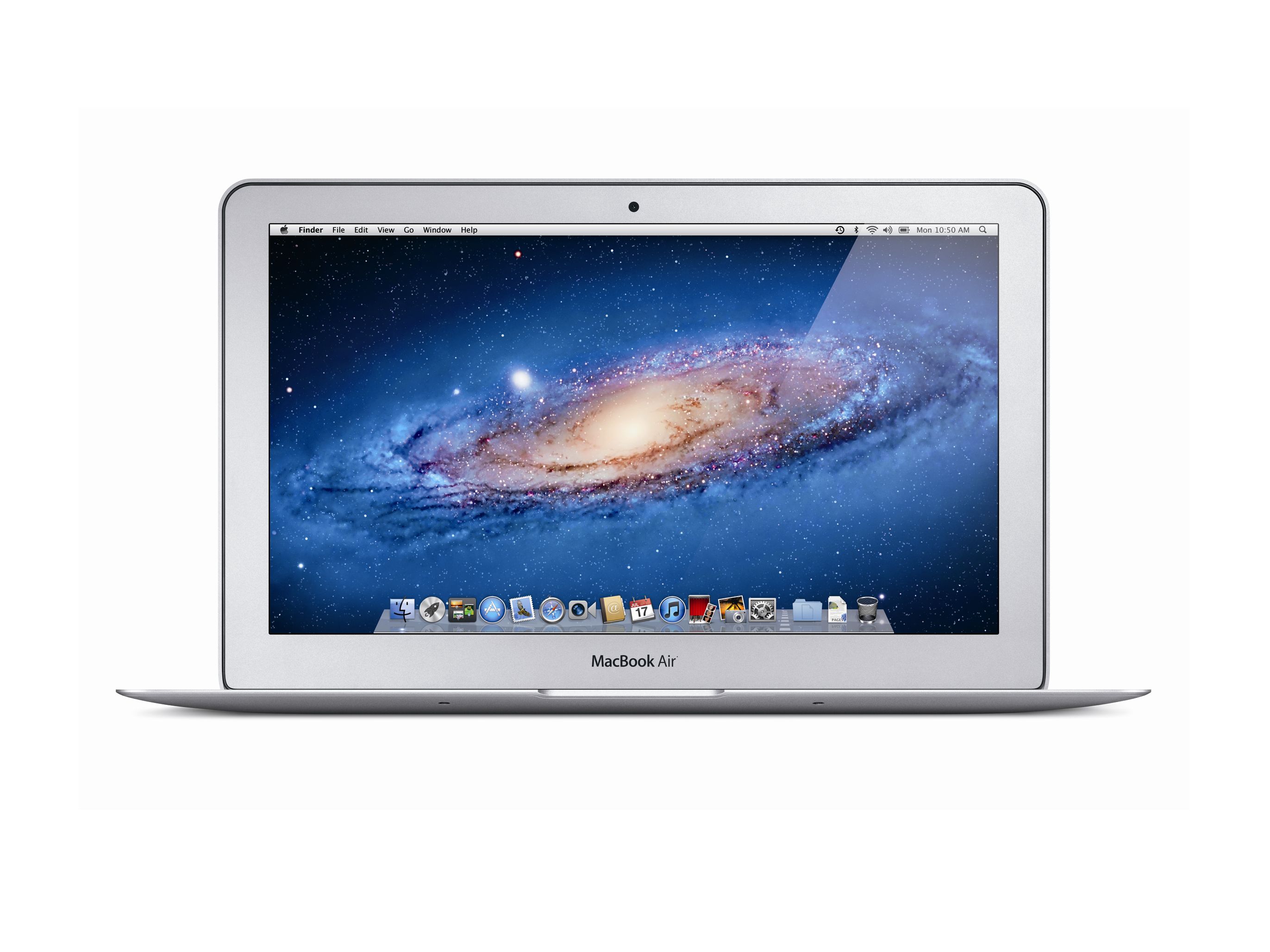Why you can trust TechRadar
The 2011 MacBook Air is an awesome machine, a fact borne out by our test results. The new Sandy Bridge 1.8GHz Core i7 processor soon showed its worth. In our Cinebench test, which measures the MacBook Air's 3D rendering capabilities, the new chip's Hyper Threading feature gave it a great advantage over the previous models.
Its multicore score was almost 159% higher than the 1.4GHz Core 2 Duo 11-inch MacBook Air from 2010, and over 90% up on the 1.86GHz 13-inch model.
Our Xbench test, which looks at the CPU and storage drive, also showed a massive improvement for the 2011 MacBook Air, almost doubling last year's 1.86GHz 13-inch model's score. In fact, the only test in which the new Air didn't trounce the 2010 notebooks was our Doom 3 frame rate test.
The Sandy Bridge's integrated Intel HD Graphics 3000 chipset is on a par with the previous generation's Nvidia GeForce 320M (which couldn't be integrated into Core i-series processors due to a legal dispute), but it isn't quite as good at rendering 3D games. Its score of 62.7 frames per second (fps) beat the 2010 1.4GHz 11-inch MacBook Air's 51.7fps, but was a little behind the 1.86GHz 13-inch model's 69 fps.
The SSD means boot-up time is extremely low. What's more, you can make use of Standby mode by closing the lid without switching the power off, which means your MacBook will be instantly on when you open the lid again. This is ideal for times when you're likely to use your computer frequently but in short bursts, such as blogging at a show or event.
Like all new Mac notebooks, battery life is excellent too, with a full charge giving up to five hours of web surfing and up to 30 days in Standby Mode. We also tested it by running the BBC iPlayer's live feed at full screen and it lasted an impressive two hours and 34 minutes.
The screen is amazing, with excellent viewing angles; crisp, consistent colours; and a pixel resolution that's on a par with many 13-inch laptops. Its small size and widescreen aspect ratio are ideal for watching a movie or TV show on an aeroplane or train, and the backlit keyboard makes it easy to type in low-light conditions.
We won't see the benefit of the move to Thunderbolt until more compatible peripherals (or at least adapters) are released. Third-party manufacturers seem very slow on the uptake with this one. But since it offers all the functions of the Mini DisplayPort it replaces, it's not to our disadvantage in the short term.
We've no hesitation in recommending the new 2011 11-inch MacBook Air. Before investing £1,399 in the customised, 256GB Core i7 version reviewed here, though, ask yourself what you're going to use it for and whether you need to spend that much. Are you going to use it as a convenient carry-around computer, something you can drop in your bag and use on the move, before syncing with your main Mac at home again? If so, the £849 entry-level 2011 MacBook Air might well prove powerful enough.
Current page: 1.8GHz 11-inch MacBook Air review: Benchmarks
Prev Page 1.8GHz 11-inch MacBook Air review: Specification Next Page 1.8GHz 11-inch MacBook Air review: Conclusion